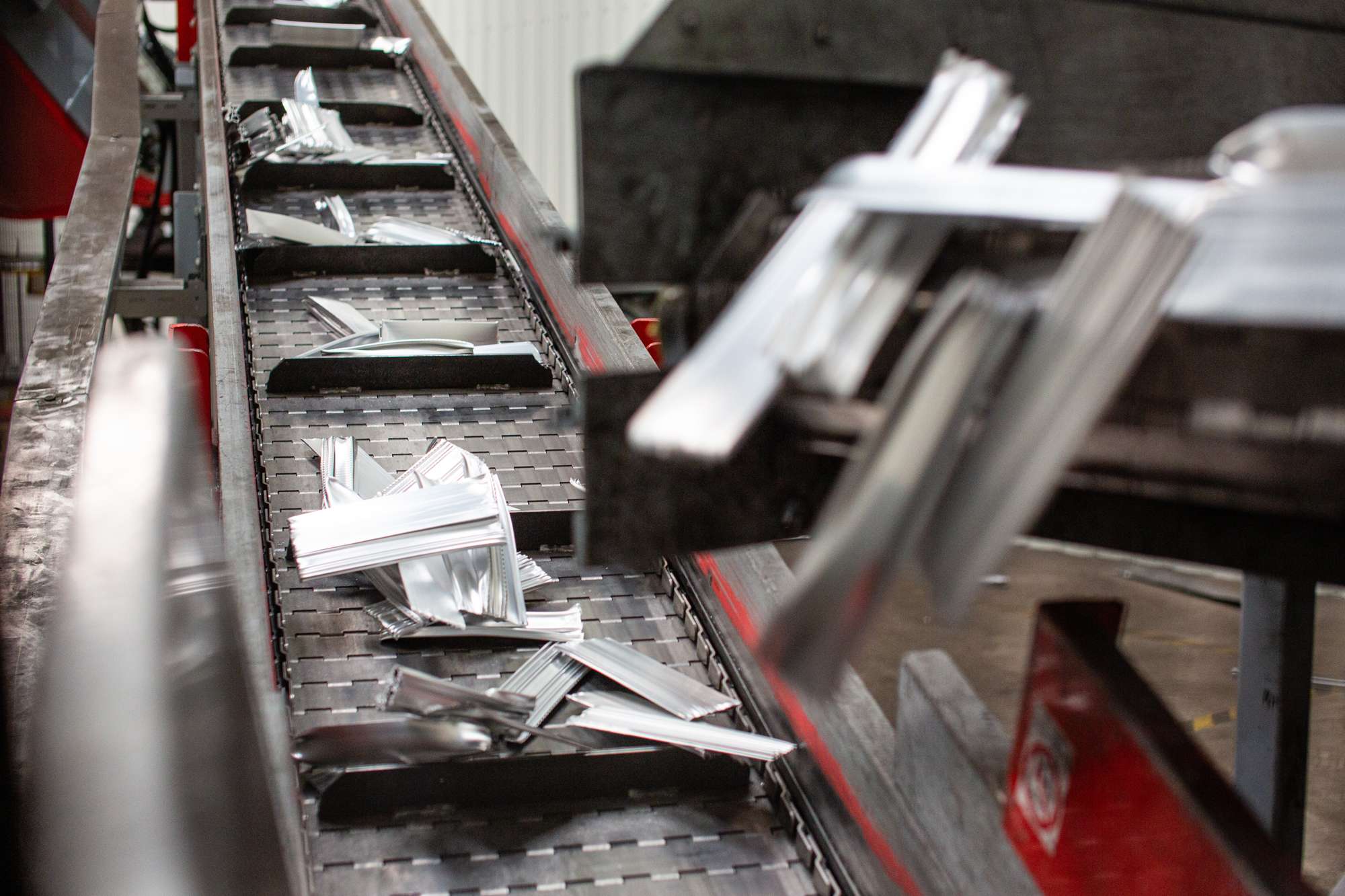Discover the news of the industrial group expert in the protection of sensitive and hazardous materials, as well as the list of trade shows and events in which Tournaire participates.
ALUMINIUM IS ON THE CUTTING-EDGE OF RECYCLABILITY FOR PACKAGING MATERIALS.

Many types of packaging materials are used to protect products during storage and shipping, both in mass retail and industrial packaging: paper, cardboard, plastic, glass, wood and metal.
The choice of material varies according to criteria such as product type, the level of protection needed and how it will be shipped.
Compared to these materials, aluminium has some amazing properties: it is highly malleable, lightweight and resistant as well as offering conductivity and full protection from light, oxygen and water. But just how recyclable is aluminium packaging?
01. Aluminium, a naturally-occurring element
02. The environmental impact of using aluminium in packaging shrinks over time
03. Infinite recycling and all-aluminium packaging
04. Aluminium, the most environment-friendly packaging material
Aluminium, a naturally-occurring element:
Aluminium has been in use since ancient times. It occurs naturally, although only in compounds such as alum (the best known). Much later, in 1821, French mineralogist and engineer Pierre Berthier[1] analysed a mineral found near Baux-de-Provence and pinpointed a high concentration in alumina. This red mineral, later named bauxite, was later to become the main mineral in aluminium.
Ranking third among the most common chemical elements, aluminium is the most abundant element, making up 8% of the earth’s crust.
The environmental impact of using aluminium in packaging shrinks over time:
For one tonne of aluminium, you need to extract two tonnes of alumina and around four tonnes of bauxite. For an accurate environmental footprint, you need to analysing the product’s full life cycle. This type of analysis is the most comprehensive because it factors in extraction, manufacturing, shipping, use, recycling and related operations involving the use of energy, secondary materials, and shipping. The standards ISO 14040 and 14044[2] set out the rules and method, factoring in all steps in the material’s life cycle.
Nowadays, global annual production of primary aluminium stands at 60 million tonnes. “The stock of aluminium for recycling is ever growing and is an important resource for the future given its alleviated energy cost”. Source Aluminium France.
You can find out more, and get the low-down on why “Aluminium packaging contributes to the rational use of resources…” and how “aluminium preserves more resources than it uses” from the European Aluminium Association[3] brochure.
Infinite recycling and all-aluminium packaging
The recycling of aluminium packaging is essential to protect the environment, saving on both resources and waste volume. Packaging is recyclable when it can be transformed into a new raw material used to produce new items. Aluminium can be recycled infinitely, to the point that 75% of aluminium produced in 1920 is still in use today. Aluminium is fully recyclable without any deterioration in its initial physical and chemical qualities.
Used, all-aluminium packaging (secondary aluminium) is of great economical value. This contributes to its being effectively recycled: the more aluminium a product contains, the more chances it has of being recycled! Aluminium packaging can be used to produce new packaging and other premium products such as engine blocks, building material and bicycles. For example, you can make 300 racing bike frames from a tonne of recycled aluminium.
Aluminium, the most environment-friendly packaging material
According to an ACV Bio Intelligence survey on behalf of Tetra Pak, published on 25 June 2019: “Aluminium has the lowest impact on nature and can thus claim the title of most environment-friendly packaging material[4]”.
This means that it is highly likely that most aluminium packaging used to protect products you buy, especially food packaging, will be recycled. To be precise, some 47% of aluminium used in France has been recycled, For example, cans made of aluminium contain three times more recycled matter than glass or plastic bottles, as the Aluminium Association[5] points out.
Aluminium is low-carbon
Very little energy is needed to recycle aluminium: only 5% of that used to produce the primary metal. In other words, recycling aluminium packaging (to make secondary aluminium) saves up to 95% energy compared to producing primary aluminium and an equivalent amount of GHG emissions (source AAA). Indeed, recycling secondary aluminium helps to reduce CO2 emissions by at least 100 Mt a year (evaluated, in 2015, on a basis of 30 Mt of secondary aluminium produced).
Aluminium is not only lightweight (its density being three times less that of steel) it also contributes massively to decarbonation, since it is infinitely recyclable. Weighing only half as much as steel, aluminium helps to reduce load weight for example, for shipping over land, sea or air, when used as substitute for many other, heavier packaging materials such as glass or steel, for equivalent technical performance.
Aluminium recycling in France creates jobs:
Lastly, 92% of aluminium packaging is recycled in France (8% in Europe). In 2015, 472,000 tonnes of aluminium were recycled in France. In comparison, the production of primary aluminium stood at 450,000 tonnes the same year.
Aluminium recycling creates both jobs and value. With a dozen or so refineries and recycling plants in France it accounts for some 1,500 direct jobs.
Great room for improvement for the recycling industry:
Today, in France, 47% of aluminium packaging is recycled, so there is still plenty of room for improvement. Click here to learn about all the steps to recycle aluminium packaging in France[6].
Click here to find out about Tournaire’s commitments in terms of Environmental Management Systems [7].
__________________
[1] https://fr.wikipedia.org/wiki/Pierre_Berthier
[2] https://www. iso.org/obp/ui/#iso:std:iso:14044:ed-1:v1:en
[3] https://www.european-aluminium.eu/media/1320/packaging-brochure_fr.pdf
[4] http://castilloje. ree.fr/1sti2d/1sti2d_ett_tp/2_cycle_vie/tp6d_tetrapak/synthese_acv_tetra_pak.pdf
[5] https://www.aluminum.org/aluminum-advantage/facts-glance
[6] https://www.citeo.com/le-mag/infographie-tri-et-recyclage-des-packaging-en-aluminium-fait-le-point/